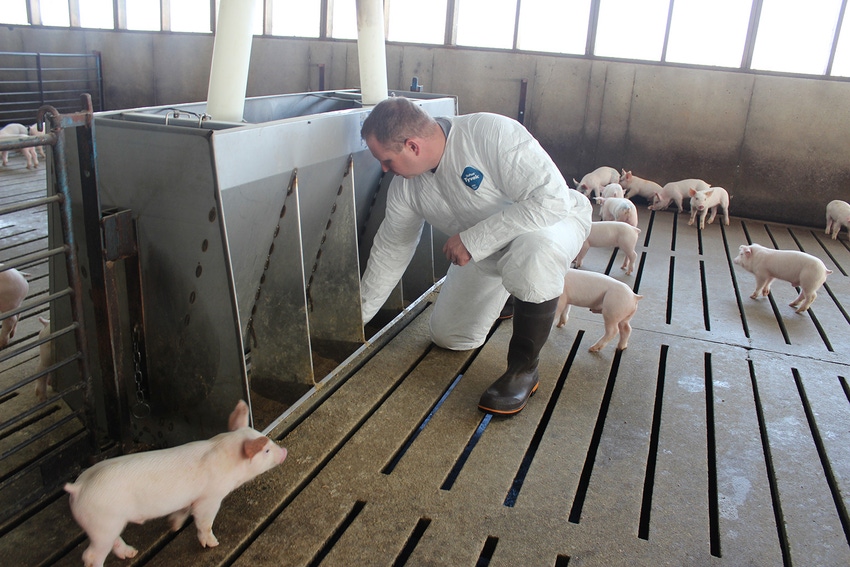Watch your pigs and adjust your equipment to support optimal finishing in summer heat.
May 23, 2017

Source: Purina Animal Nutrition
Whoever coined the phrase “the lazy days of summer” clearly wasn’t a pig farmer. Hot, humid summer weather demands extra vigilance to keep pigs comfortable. It can be particularly challenging to support optimal performance in finishing barns when pigs are approaching market weight.
Pigs nearing market weight are pushing stocking densities and generating maximum body heat. “When your finishing pigs reach market weight during the heat of summer, they could have a greater risk for heat stress and reduced performance than during other seasons,” says Dan McManus, DVM, Purina Animal Nutrition swine specialist. “You can help minimize the risk with a few changes to your finishing barn routine during summer months.”
Understand your ventilation system
“A common mistake I see in wean-to-finish operations is a lack of understanding of the ventilation system and how it works,” McManus says. “You’re not saving time or helping your bottom line if you skip reading the manual and try to learn as you go.”
The goal of pig barn ventilation is to move as much air as possible without creating a draft or causing stress to the pigs. The set points you choose to start your ventilation should be based on managing air quality, including humidity.
• Lower your set point to 62 degrees F by the time a group reaches 100 pounds. Remember, the set point is not the temperature you want in your barn. It’s the temperature at which you want your controller to operate.
• The optimal temperature for pigs entering the nursery in summer is 82 degrees F. By the time those pigs reach 70 days post-weaning, the optimal temperature is 64 degrees F.
• Ideal humidity in a wean-to-finish facility is between 60 and 70%.
• If your controller stage differential is usually set at 2 degrees F, set it to 1.5 degrees F in the summer. This will help combat the added summertime heat.

Adjust your sprinklers
Research has shown on/off sprinklers can support better grow/finish pig performance than continuous foggers. This is because the drying phase of evaporative cooling is what cools your pigs — not the wetting action.
• Have your sprinklers set to come on at 18-20 degrees above your set point once the barn reaches an average of about 100 pounds of body weight.
• Set your “on” time for two minutes, which should be enough time to wet down 60% of the pen. Set your “off” time at 20 minutes in summer, and turn it down to 15 minutes on the warmest days.
• It’s easier to see water on the barn floor than on the pigs themselves, but the drying time is the same. Watch your slats, and you will know when your pigs are dry.
Minimize feed outages
Outages are common in summer because increased humidity can cause feed to bridge in bins and feeders. A good practice is to check your barns twice per day to minimize the chance of a 24-hour feed outage.
• In your twice-daily walk-through, check feeders and augers for bridging, and confirm you have 50% pan coverage for optimal intake.
• In the heat of summer, pigs are more likely to eat at night. If you check your feeders a second time in the evening, you increase the likelihood your pigs will have feed overnight when they’re hungry.
• Check your waterers, too. Pigs will drink 1 gallon of water per 100 pounds of bodyweight per day when they are comfortable. In hot weather, that can increase by as much as 50 to 70% per day.
Modifying your management protocol in summer may help your pigs perform to their genetic potential, even in the heat. Taking extra care to understand and use ventilation systems correctly, using on/off sprinklers and minimizing feed outages can help maintain an optimal environment in your grow/finish barn.
Contact your local Purina Animal Nutrition representative to evaluate opportunities to improve your operation’s feed efficiency or visit progresstoprofit.com.
You May Also Like



